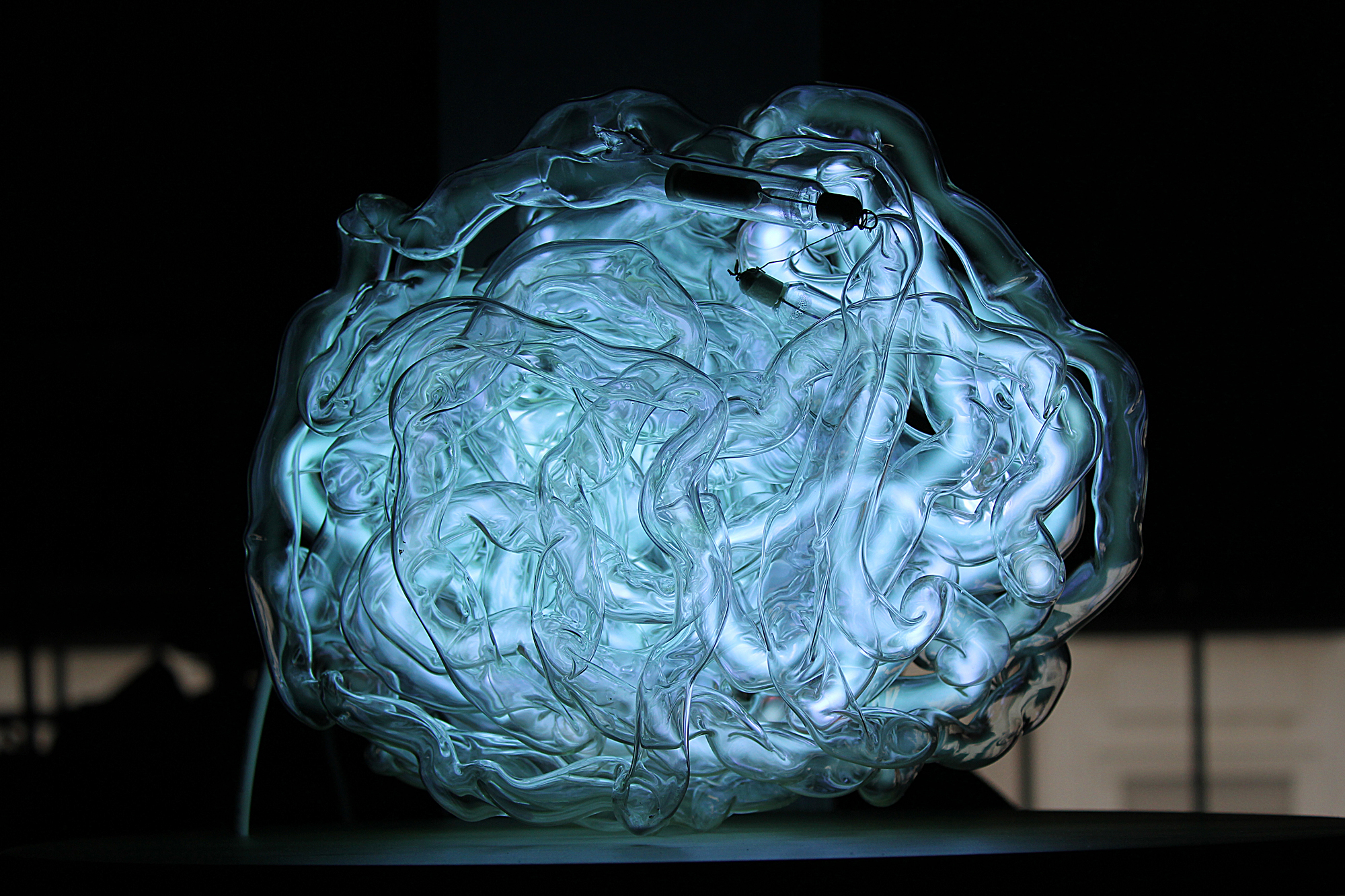Gregory and Cyril Chapuisat joined forces for the first time in 2003 with the installation Nature morte, for which they amassed branches and foliage to create a cabin made of greenery in their exhibition space. Trained in different fields (Gregory studied illustration and silkscreen printing in Los Angeles, while Cyril specialised in animation in London), they share the same creative vision.
Their always-unique creations consist of wooden structures, often monumental ones, in which the brothers and their team sometimes eat, work and sleep, as they did at the CAN in Neuchâtel (2010-2011), where the collective continued to live for the whole duration of the exhibition. Like a company, the members of the brotherhood change over time, but they all constitute the Chapuisat Brothers.
Their structures with visible frameworks retain a strong aesthetic dimension, and offer visitors the chance to not only contemplate something, but also undergo a unique experience. To explore their works, viewers usually have to physically engage with them, getting on all fours inside them—a kind of regression that ensures a return to childhood. These hideouts or refuges, with their cramped, sometimes uncomfortable spaces, confront explorers with their own anxieties, but above all they recall the pleasure in playing cultivated by these builders.
Although this very organic creative process contrasts with some of the group’s other more geometric creations, their artistic production remains essentially playful and liberated. Their space-based work skilfully mixes the sculptural and architectural, and adapts to the place it occupies, whether it is set up among the vaults of the medieval abbey in Maubuisson (Le Buisson Maudit, 2013), on the roof of a chalet in Vercorin (Résidence secondaire, 2012), or on the ceiling of a submarine base in Saint-Nazaire (2012).
The nomadic group moves wherever their projects take them. These projects are all indexed on their website.
Their always-unique creations consist of wooden structures, often monumental ones, in which the brothers and their team sometimes eat, work and sleep, as they did at the CAN in Neuchâtel (2010-2011), where the collective continued to live for the whole duration of the exhibition. Like a company, the members of the brotherhood change over time, but they all constitute the Chapuisat Brothers.
Their structures with visible frameworks retain a strong aesthetic dimension, and offer visitors the chance to not only contemplate something, but also undergo a unique experience. To explore their works, viewers usually have to physically engage with them, getting on all fours inside them—a kind of regression that ensures a return to childhood. These hideouts or refuges, with their cramped, sometimes uncomfortable spaces, confront explorers with their own anxieties, but above all they recall the pleasure in playing cultivated by these builders.
Although this very organic creative process contrasts with some of the group’s other more geometric creations, their artistic production remains essentially playful and liberated. Their space-based work skilfully mixes the sculptural and architectural, and adapts to the place it occupies, whether it is set up among the vaults of the medieval abbey in Maubuisson (Le Buisson Maudit, 2013), on the roof of a chalet in Vercorin (Résidence secondaire, 2012), or on the ceiling of a submarine base in Saint-Nazaire (2012).
The nomadic group moves wherever their projects take them. These projects are all indexed on their website.
